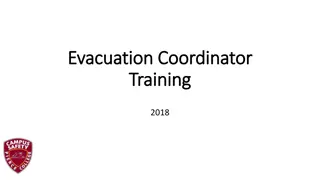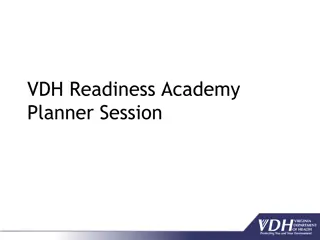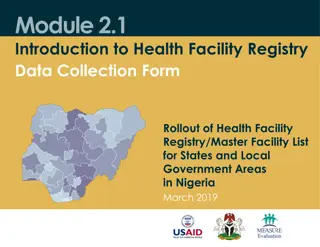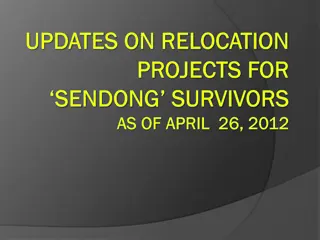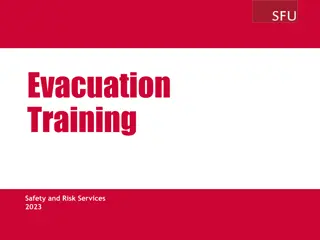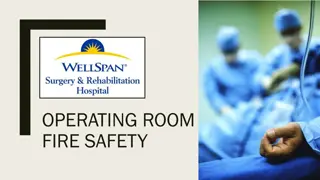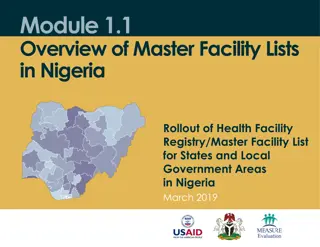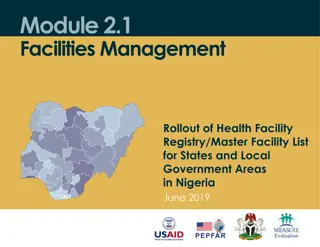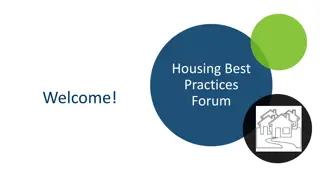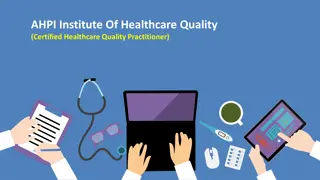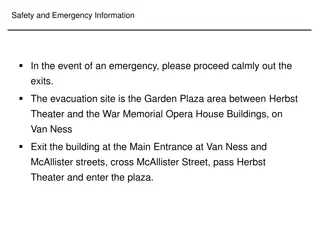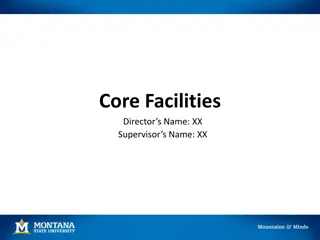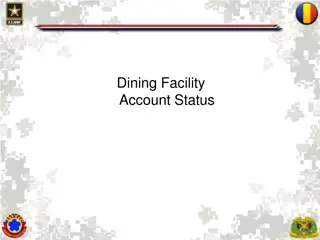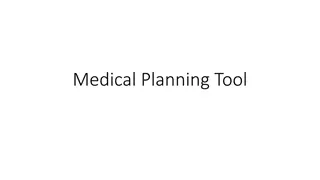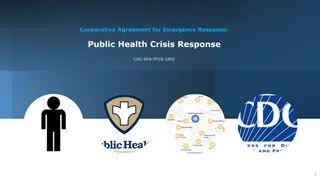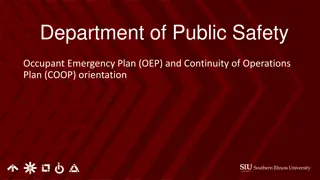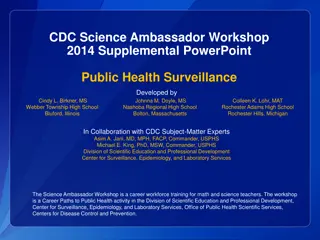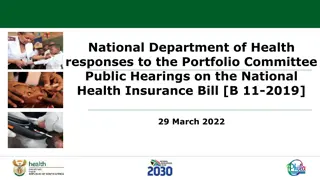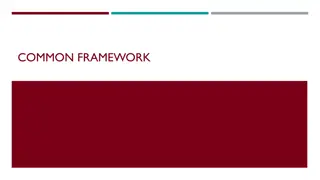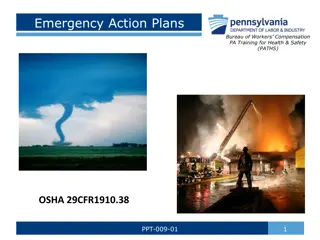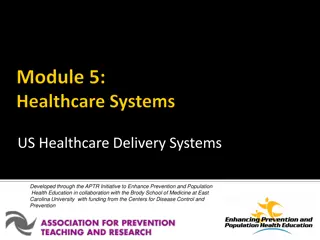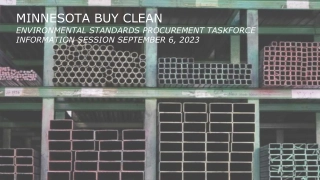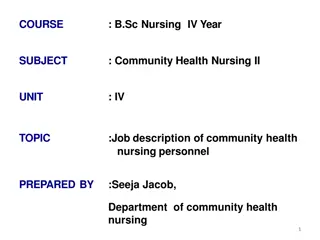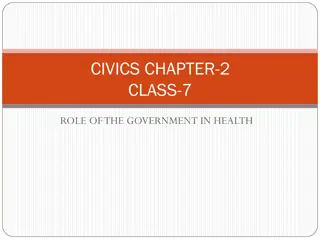Healthcare Facility Sheltering, Relocation, and Evacuation: Ensuring Public Health in Minnesota
Addressing the need for healthcare facility sheltering, relocation, and evacuation in Minnesota, this initiative involves a team effort led by healthcare professionals. The effort was prompted by past events like the Red River Floods and evacuations of healthcare facilities. Key issues include inconsistent terminology, lack of standardized processes, and decision-making challenges. The project focuses on decision-making protocols, authority, and terminology clarification to enhance preparedness for various incidents.
Download Presentation

Please find below an Image/Link to download the presentation.
The content on the website is provided AS IS for your information and personal use only. It may not be sold, licensed, or shared on other websites without obtaining consent from the author. Download presentation by click this link. If you encounter any issues during the download, it is possible that the publisher has removed the file from their server.
E N D
Presentation Transcript
Healthcare Facility Sheltering, Relocation, and Evacuation PROTECTING, MAINTAINING AND IMPROVING THE HEALTH OF ALL MINNESOTANS
Healthcare Facility Sheltering, Relocation and Evacuation Developed because a need as seen in recent events. Team Effort!! 2
The Team John Hick MD - HCMC/MDH Chuck Hartsfield Central / WC RHPC Don Sheldrew - MDH Katherine Grimm Healtheast Care System Janice Jones - MDH Carol Sele - NW RHPC Donna Blomquist Metro RHPC Eric Weller SC RHPC Mark Lappe Metro RHPC Chris Chell Metro RHPC Angie Koch SE RHPC / MDH Julie Johnson SW RHPC Pam Schultz Children's Hospitals and Clinics of MN Cheryl Stephens NE RHPC 3
Background Stuff Happens Recent Events 2009 Red River Floods Meritcare Hospital Evacuation Eventide Nursing Home and Assisted Living 2010 New Richland Nursing Home Evacuation Other less well known possibilities that almost happened 4
Issues Inconsistent and confusing terminology Differences between hospital and long-term care settings Lack of standardized decision-making regarding evacuation Lack of standardized processes and tagging/tracking of patients Inconsistency regarding the types and quantity of information sent with the patients Product for both Hospitals and LTC facilities 5
Decision making How When Triggers Who to call When to call Roles and responsibilities 6
Decision making continued Who has authority Command decisions Unit based decisions Command responsibility 7
Terms / Definitions Urgent / emergent Shelter in Place / Evacuation Relocation?? where s that fit? Full or partial evacuations 8
Triggers Types of incidents Threat to patients / residents Time / duration / proximity 9
Patient Triage Who s going? Who s going when? Who s going where? Room clear Is standard triage assumed or should there be alternatives? 10
Patient / Resident Tracking Floor / unit to triage or other unit Transport Facility to facility Multiple facilities 11
What to send Documentation how much Medical necessities meds / durable medical supplies Personal Items? Lots of Questions regarding the previous slides! 12
Process Reviewed existing plans Central region template already in use and contained key structural elements Defined new terms Refined and re-wrote plan sections Introduced decision algorithm Developed job aids and tag recommendations 13
Process Continued Introduced to RHPC s and others for comment and feedback Developed training materials Ongoing process review and modification as needed Availability how and when 14
Plan Specifics Template not proscriptive must be adapted to institutional needs however facilities should not change definitions or base organization in order to maintain consistency. 15
Terminology Shelter in Place Shelter in place - Shelter In Place assures the maximal safety of individuals in their present location when the dangers of movement exceed the relative risk from the threat or movement cannot be safely completed in a reasonable timeframe . 16
Terminology - Relocation Relocation - movement of patients to an area of relative safety in response to a given threat or movement to staging areas within the institution in preparation for evacuation. Horizontal - movement to a safe location on floor, preferably nearer to an the same emergency exit. Vertical - movement of individuals to a safe different floor when a horizontal evacuation cannot meet the service or safety needs of the patients or is unsafe location on a 17
Terminology - Evacuation Evacuation - movement of patients out of the affected facility when the facility cannot maintain a safe environment of care. Evacuations may be emergent (fire or other immediate life safety threat) or non-emergent (delayed life-safety threat or anticipated evacuation) 18
Evacuation Complete or Partial Complete evacuation complete evacuation of a facility due to an unsafe environment of care usually will involve facility shutdown actions Partial evacuation Evacuation of a subset of facility patients this may involve patients requiring specialized care that can no longer be safety delivered at the affected facility (intensive care, dialysis) 19
Sheltering, Relocation, and Evacuation Decision Tree Note: decisions can be unit level or Incident command level. Decision tree starts with Emergency identified Initial Size-UP. Unit level After size up determine if it is a life threat. Unit level. Yes it is a life threat, is it an imminent threat? Unit level Yes it is an immanent threat? Is the entire facility affected? Incident command Yes the entire facility is affected? Is Evacuation safer for Patients/residents compared to sheltering in place? (Thread duration and impact) incident command Yes evacuation is safer? Complete Evacuation (see below) unit level No? Shelter in place (see below) No It is not an immanent threat. based on resources available, duration, and threat assessment determine sheltering place or relocation actions. Affected units shelter in place or relocate at the decision of unit charge RN/supervisor to adjacent closest safe are (horizontal preferred, vertical secondary). Can relocated patients/residents be safely cared for over time? If yes, incident commander will make decisions. If no, do a partial evacuation (see below). No it is not a life threat. Incident commander assess the situation. Is there a potential thread over the expected duration of the event? No, incident command will evaluate what action to take Yes it is a life threat based on resources available, duration, and threat assessment determine sheltering place or relocation actions. Affected units shelter in place or relocate at the decision of unit charge RN/supervisor to adjacent closest safe are (horizontal preferred, vertical secondary) Can relocated patients/residents be safely cared for over time? If yes, incident commander will make decisions. If no, do a partial evacuation (see below). Shelter in place: Proactive Actions. 1. Weather close drapes, move away from windows, announce to staff/visitors. 2. HAZMAT Changes to ventilation supply/exchange, access controls. 3. Security (bomb, shooting, civil unrest) access controls, doors/curtains closures, take cover actions if needed. Unit level Full or partial Evacuation (see unit evacuation guide and facility checklist for detailed guidance): Notifications internal/external (EMS, RHRC also) Access controls and supplemental security Staging/transport areas identified Staffing triage, loaders Supplies water, crash cart, food, linens Unit tracking/triage for transport Medical records (see unit evacuation guide) Visitors and staff accountability Patient/resident movement ambulatory, step down, stable, non-ambulatory, critical in order to staging, reverse for transport Clear units Facility shut down/stay team 20
Command / Coordination / Communication Incident Command vs. unit-level decisions Coordination with RHPC and outside agencies Communication internal and external 21
Triage Traditional or Reverse Triage Level Priority for Evacuation off nursing unit REVERSED START PRIORITY Priority for Transfer to another healthcare facility TRADITIONAL START PRIORITY RED- STOP These patients require maximum assistance to move. In an evacuation, these patients move LAST from the inpatient unit. These patients may require 2-3 staff members to transport. These patients require maximum support to sustain life in an evacuation. These patients move FIRST as transfers from your facility to another healthcare facility. YELLOW CAUTION These patients require some assistance and should be moved SECOND in priority from the inpatient unit. Patients may require wheelchairs or stretchers and 1-2 staff members to transport. These patients will be moved SECOND in priority as transfers from your facility to another facility. GREEN - GO These patients require minimal assistance and can be moved FIRST from the unit. Patients are ambulatory and 1 staff member can safely lead sever patients who fall into this category into the staging area. These patients will be moved LAST as transfers from your facility to another healthcare facility. Adapted from Continuum Health Partners Evacuation Planning for Hospitals (2006) 22
Job Aids Included are additional Job Aids used as a compliment to HICS Job Action Sheets Inpatient, outpatient, support and administration Pre event assessment tools Facility shutdown / stay team considerations 23
Templates Unit Templates Considerations for various types of units such as medical gases, specialized equipment, preferred /secondary relocation area Transportation needs / resources Block diagram for relocation movement 24
Training Matrix Included Suggested Training Awareness/All (floor / unit staff) Knowledge/Operations (Unit Supervisor / Charge Nurse) Proficiency/Command (Command and General Staff 25
Summary Overview Modifiable Hospital / LTC Decision points / makers / authority Reasons why Tools and templates Issues found Process Terminology 27
Thank you. WWW.HEALTH.MN.GOV


